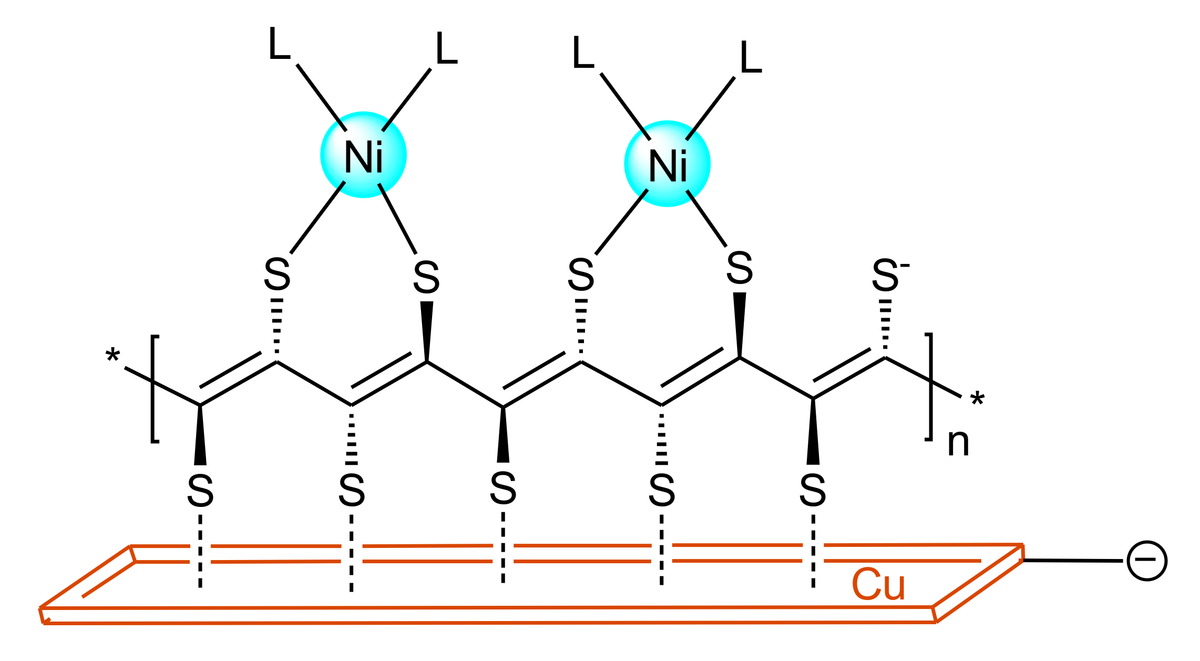Functional Polymers
Based on these results, we have currently been working on the extension of the concept to coordination-chemical polymers with the acetylene building block. Approaches here involve acetylenedithiolate itself, acetylenebisamidinates or poly(acetylenedithiol). In particular, poly(acetylenedithiol) in its all-cis conformation has a pronounced interface topology. The production of poly (acetylene-dithiol) aims at the use of modifying cathodic electrodes by applying a self-assembled monolayer (SAM) on a metal surface. On the flip side of the polymer, which is fixed in this way, the remaining thiolate groups form a sulfur donor matrix, which in turn is well suited to coordinate biomimetic complex building blocks. The ethylene bridges are likely to result in strong electronic coupling of these metal centers with the electrode surface and intense charge-transfer transitions. Systems designed in this way are to be investigated for their performance in electrocatalysis or photocatalysis at defined electrochemical potential.

